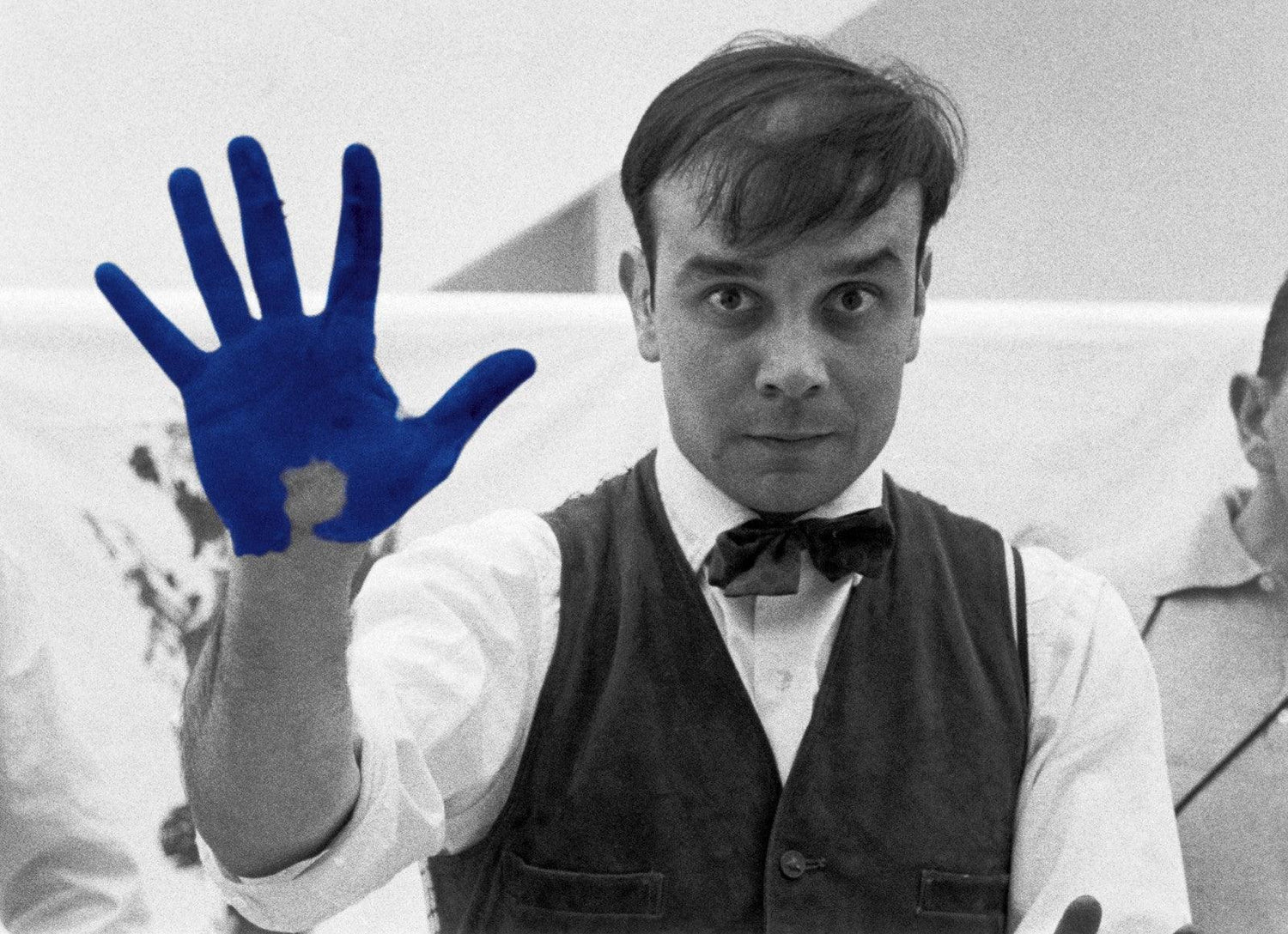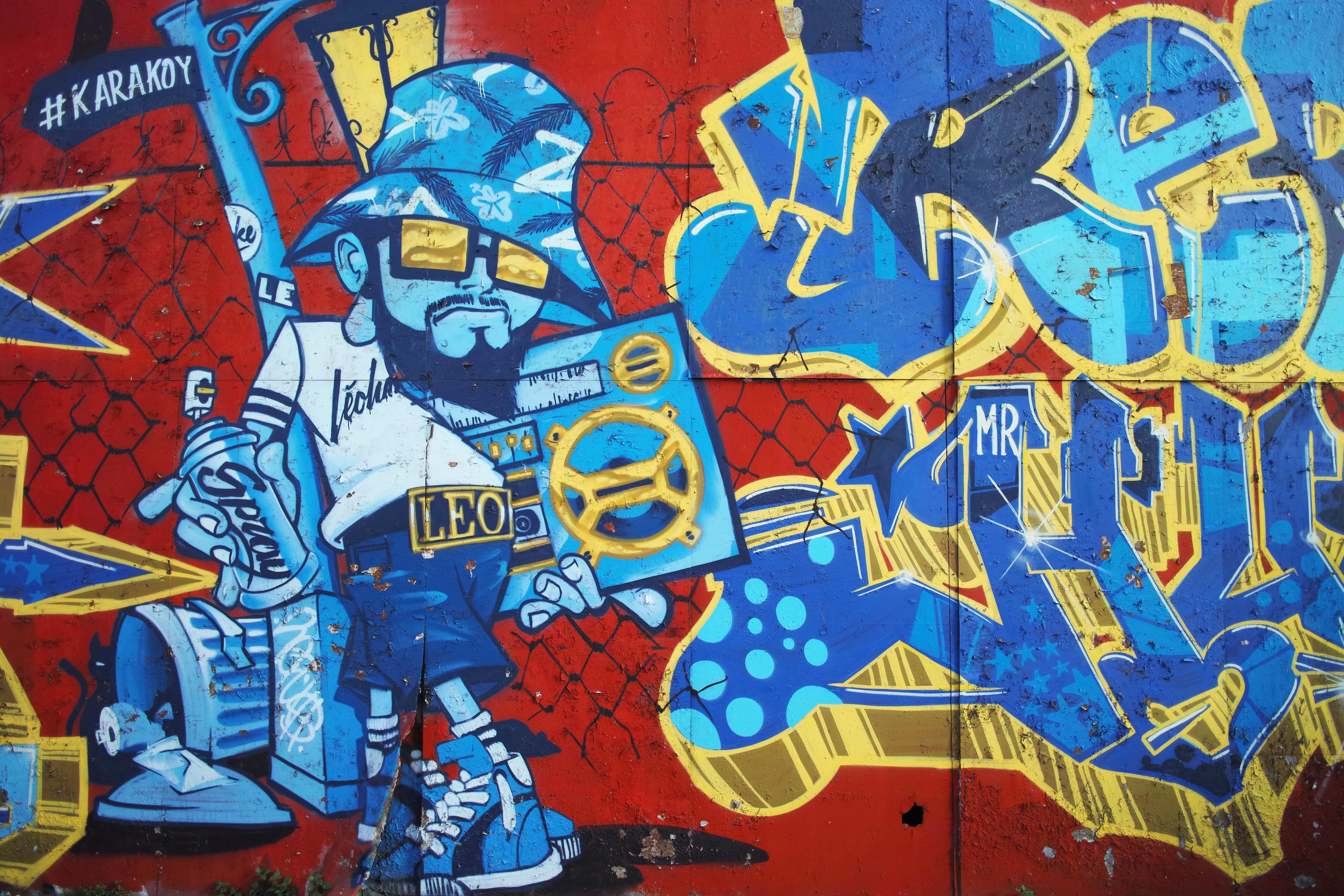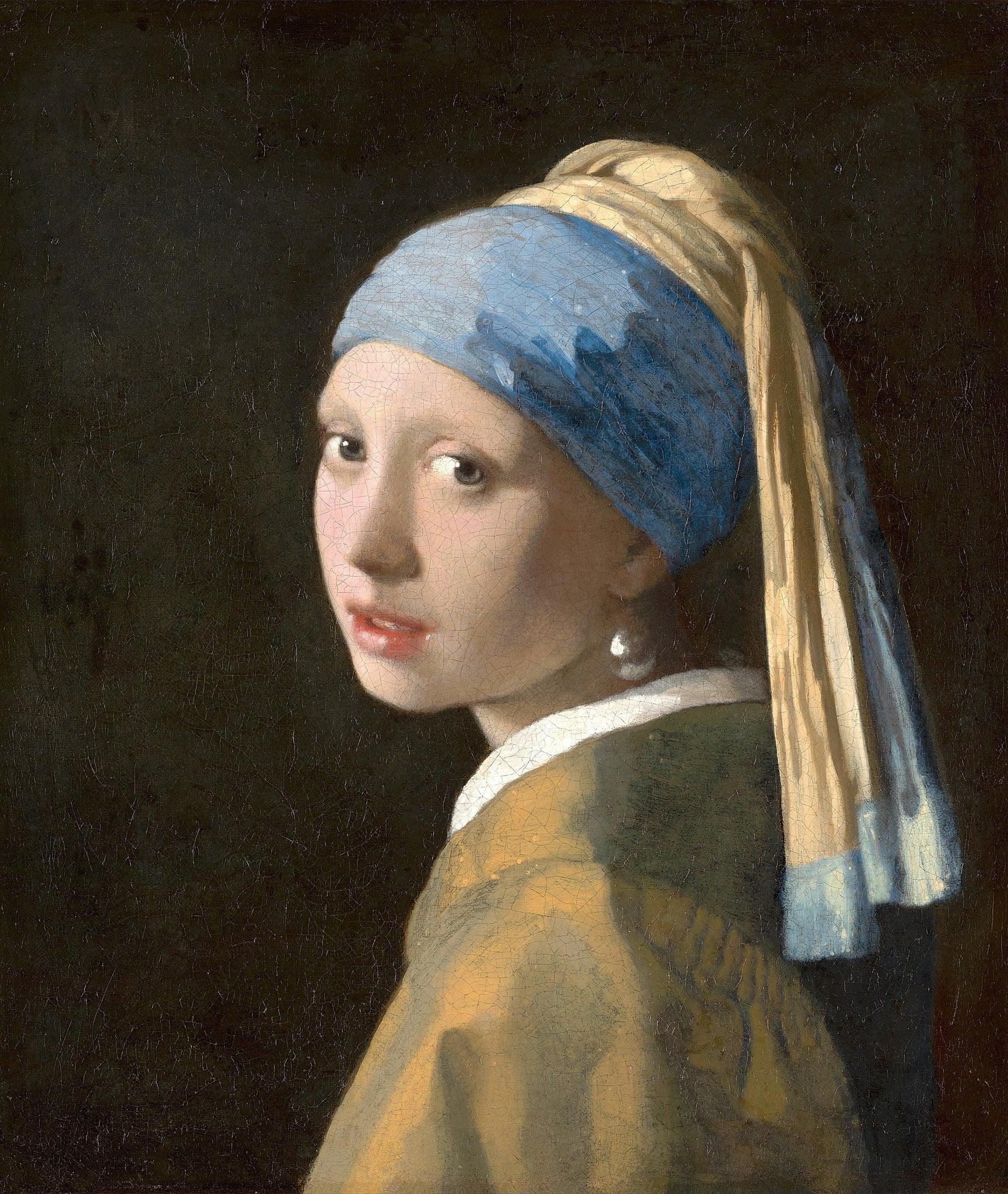
Yves Klein was one of the most prolific and creative artists of post-war European art. He made paintings using his signature "International Klein Blue" and introduced many experimental techniques to his audience. Until his death at age 34, the artist produced hundreds of artworks in different mediums and forms. If you want to discover more about this Yves Klein’s life and his famous works, continue reading!
Biography
Early Years

Yves Klein was born in 1928 in Nice to Fred Klein and Marie Raymond. His parents were both prestigious painters who influenced post-war art in France. And although the young Yves Klein didn't receive a formal education in art, thanks to his parents, he was exposed to many different art forms and techniques.
Klein studied at the École Nationale de la Marine Marchande and the École Nationale des Langues Orientales between 1942 and 1946. In his school years, Klein grew interested in judo and began practicing it. In 1953, he travelled to Japan and became the first European master at judo.

Being a successful judo master, Klein trained the Spanish judo team and wrote a book about the fundamentals of judo. Meanwhile, he also published two books, Yves Peintures and Haguenault Peintures, that included his monochromes. Later, planning to create an art career, Klein moved to Paris and began making more monochromes, which brought him worldwide fame.
First Years as a Famous Artist
Even though Yves Klein began painting at an early age, and his first private exhibition was in 1950, his first public showing was by his book Yves Peintures. And the artist's first public exhibition was in 1955, when he displayed his first monochrome works, which were of different colours, at the Club des Solitaires.

This first exhibition was only the beginning of his career as a famous artist; the following year, Klein exhibited at Colette Allendy's gallery. While participating in public exhibitions, displaying his unique works, and receiving appreciation from the audience, Yves Klein's style and technique constantly evolved, as with his approach to art.
Bluer-Than-Blue Hue and Klein’s Further Career
In 1957, Yves Klein completed the fabrication of his signature bluer-than-blue paint, which he would call "International Klein Blue," or IKB, and used it as the dominant hue in most of his subsequent works. The same year, Klein made two joint shows in Paris, which brought him even more fame. During one of his exhibitions' openings, the artist made his first action, Sculpture aérostatique, where he released 1001 blue balloons.

In 1958, Klein exhibited his famous work, the Void, an exhibition of nothingness. For the Void, Klein removed everything in the Iris Clert Gallery, except a large cabinet, and painted everything white. Then, he accepted thousands of curious people into the gallery only to see nothing. About this exhibition, Klein said that he wanted to show his works, which were "now invisible," in a clear and positive manner.
The same year, the Gelsenkirchen opera house in Germany commissioned Klein, the winner of the town's 1957 international competition, to paint the building. The artist decorated the opera house with his blue Sponge reliefs.

Klein's perception of art was constantly evolving around his unique philosophy. He believed that art wasn't just a material creation; it was within the artist themself and existed wherever the artist was. Klein also thought everything, from the human body to literally nothing, was art. Therefore, he sold empty places, nothingness, in the city for gold; he even gave the purchasers a certificate of ownership.
The artist also made a set of famous artworks he called Anthropométries with an experimental method. He painted these pieces using "live brushes," models who used their bodies as art-making devices. He would cover his nude female models in blue paint and drag them across the canvas to produce images.
Last Years

In 1960, Klein signed the manifesto of the Nouveaux Réalistes, a group that opposed the aesthetic standards of the era , similar to the American pop art movement. Later the same year, he displayed his pieces in many exhibitions throughout Europe and the US. In 1962, Klein married German-French visual artist Rotraut Uecker, from whom he had a son. Unfortunately, the artist died from a heart attack on 6 June 1962, at 34.
Yves Klein’s Style
Klein used monochromatic hues to create canvases unified in colour scheme but differed in patterns and sense. Although his earliest exhibitions displayed canvases painted in various colours, Klein soon realised that people perceived his mosaic of canvases as a decoration trend, not as an art form. Yves Klein's style developed from that moment on, and he devoted himself to pioneering the monochrome; his first step was focusing on a single colour: blue.

Almost all his works included blue. Even when he exhibited nothingness in the Void at Iris Clert Gallery, he painted the gallery's windows blue and used blue curtains. He often used sponges for painting as they allowed him to create a wider variety of surfaces. Yet, he used the human body as a paintbrush for his Anthropométries.
The Top 5 Works of Yves Klein
- IKB 191
- Big Blue Anthropometry in Galler
- Anthropometry of the Blue Period (ANT 82)
- Blue Earth
- Portrait relief Arman
1. IKB 191

Yves Klein rejected the contemporary standards of aesthetics in art. So, he created monochrome paintings, employing only a single colour he fabricated and gave the name IKB (International Klein Blue). Although Klein never named his works, the artist's widow Rotraut Klein-Moquay numbered his IKB works after his death. In the IKB collection, there are 191 paintings, and IKB 191, as you can guess, is the last one in the collection.
2. Big Blue Anthropometry in Gallery

Yves Klein liked trying new methods and techniques to create art. One of Yves Klein's most famous works was a collection named Anthropométrie, where he used nude female models to paint images. He would perform the making of his anthropometry works in front of an audience, who would have the opportunity to watch his performance while enjoying their blue cocktails.
3. Anthropometry of the Blue Period (ANT 82)

Another famous piece from Klein's Anthropometry collection is the Anthropometry of the Blue Period. The painting contains blue silhouettes of female models next to each other. Like other anthropometry performances, during the making of ANT 82, Klein conducted nude models on the canvas to the sound of his own Monotone Symphony.
4. Blue Earth

Both his words and acts showed Yves Klein's audience that his whole world was blue. Of course, he couldn't find a better way to prove this than by creating a blue model globe. It is worth noting that Blue Earth wasn't Klein's only piece with Earth as a theme. On the contrary, it is a recurrent theme in Klein's works; he even had a collection titled Planetary reliefs.
5. Portrait relief Arman

Arman was a Nouveau Realiste artist and a childhood friend of Yves Klein; the two artists often supported and helped each other's works. And in 1962, Klein, maybe to immortalise his dear friend, moulded Arman's body in plaster, cast it in bronze and painted the relief blue.
Make Your House an Art Gallery with Artchi!
Yves Klein turned everything, even nothingness, into art, and if you want to turn your home into art, The Artchi is here to help you! With our rich selection of sculptures and paintings, you can turn every corner of your house into an art gallery. Plus, with neon art and metal wall art options, you can ornament your walls with creativity!







1 comment
Rahid
Impressive
Leave a comment
All comments are moderated before being published.
This site is protected by hCaptcha and the hCaptcha Privacy Policy and Terms of Service apply.